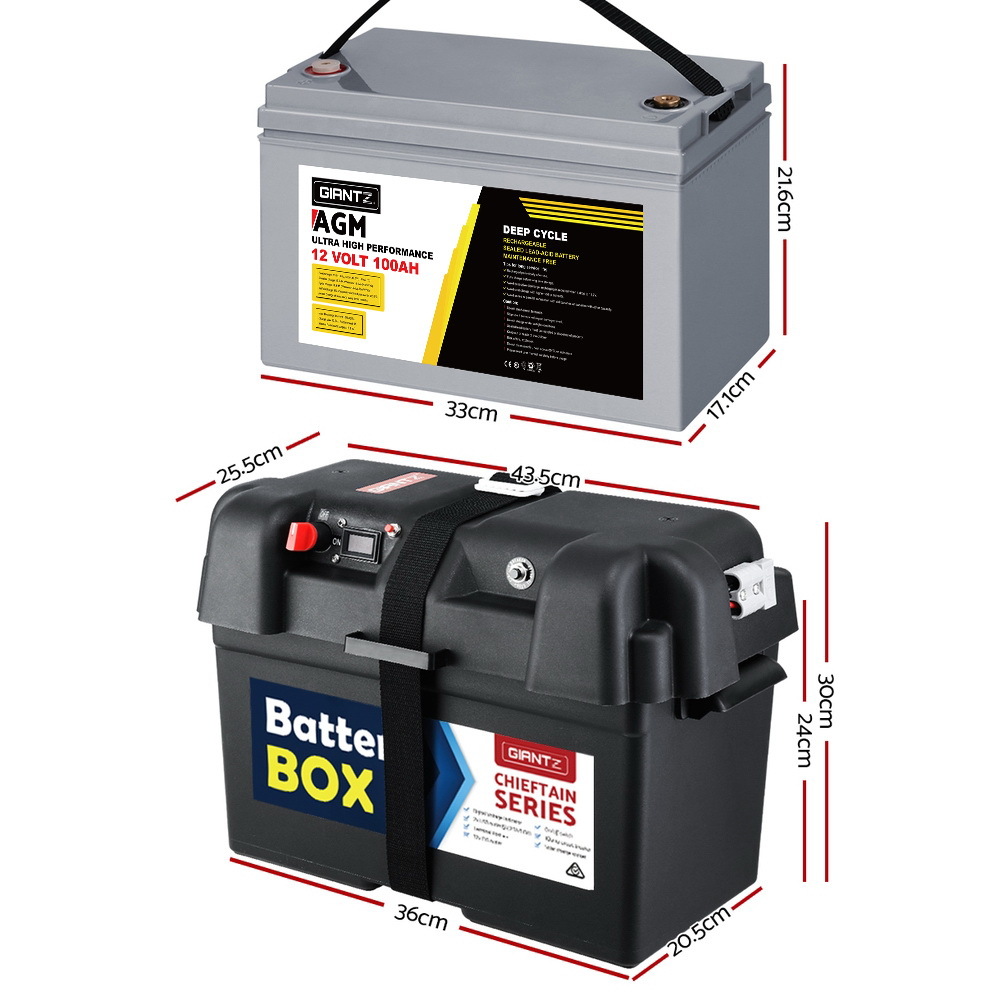
If the battery is 100Ah, this means that you have 100 Amp Hours of power available (theoretically). The battery size is determined by the Amp Hours (Ah) of the battery. This deep-cycle battery can be fitted under the bonnet of some cars (they have a space already available) or they can be fitted into the cargo area of your car or in the camper trailer/caravan. If you’d like to read up some more on them, I found this article gave quite a good overview. Buy they are also much more expensive so I’m not going to go into them here. You may have heard about how lithium batteries are becoming more and more popular as they are more efficient, lighter (in weight) and last a lot longer. There are different types of deep-cycle batteries, but the most commonly used type in Australia is the AGM (Absorbed Glass Mat) battery. most automotive batteries) are designed to deliver short, high-current bursts for cranking the engine, thus frequently discharging only a small part of their capacity. This is the battery that will be used to power the fridge, lights, devices etc.Ī deep-cycle battery is a lead-acid battery designed to be regularly deeply discharged using most of its capacity. You may hear this referred to as an auxiliary or secondary, or a dual battery system. You need another battery that is a deep-cycle battery.

I’m going to go through each of these to explain all the different terms and phrases that are used.Ĭan you use the battery that’s already in your car, the one that’s used to start the car? No So you can re-charge your battery by driving, solar panels or using a battery charger hooked up to mains. Of course, the battery will only last for a certain amount of time before going flat. In a nutshell it’s your battery that powers the things like your fridge, lights and charging your electronic devices. We don’t expect we’ll be driving every day so we will need solar panels to charge the batteries.Charging of two laptops, two phones, two tablets and camera equipment (the camera situation is unknown at the moment, but will probably be something like a GoPro and a 360° camera).Water pump to the sink (if it’s already got one).These are the electrical things we’ll need to power:.We expect the camper trailer will not have battery / lights or anything (although some do).Mid-size 4WD SUV or ute towing a camper trailer.To begin with I think it will be helpful to know what we think our set up is going to be: This is why it’s impossible to find a ‘this-is-what-you-need-to-do’ solution on the internet (yep, I’ve tried) simply because every solution will be different. Oh, and we all have very different budgets! Obviously you need to keep this all in mind when researching for the best battery power for camping set-up. Some people are digital nomads and rely on their devices to run a business while travelling. Some people are paleo eaters, some vegetarians, and some people MUST have ice-cream while on their trip. Your travelling party may be just you and your spouse, while others may include children. We all have different cars, campers, fridges and numbers of electronic devices.

To start with, we need to understand that EVERY set-up is different. Please see the affiliate disclosure for more information. So this post is a BEGINNER GUIDE covering only the basics of battery power for camping, to help put all the names and pieces of equipment into context.ĭisclosure: there are some affiliate links below. I don’t expect to become an electrician, but I would like to know the names of each of the components and what their job is. And when you’re buying used (like we are) some set-ups already have a battery powering LED lighting & a water pump for the tap, and they talk about throwing in the solar panel for free… but I don’t know if that’s enough battery for what we need and once again, if it stops working how will I know what’s wrong? I am quite sure that you could walk into any of the camping stores or reach out to them online and they’ll tell you exactly what you need, but then if it stopped working, I wouldn’t have the foggiest idea of what was wrong… not much help if you’re in the middle of nowhere. If you’re like me and your brain starts to hurt whenever you start reading things like ‘deep cycle battery’, ‘inverter’, ‘anderson plug’, ‘amp hours’ or ‘watt meter’, then hopefully this post is helpful to you. Actually I know I don’t have the whole picture yet because I’m still confused and I don’t know what I need! I have been putting off writing about the basics of battery power for camping for a couple of weeks now, it’s a subject that I know I need to know about… but it’s been quite confusing and I’m not sure I have the whole picture. Learn about the basic of battery power for camping


 0 kommentar(er)
0 kommentar(er)
